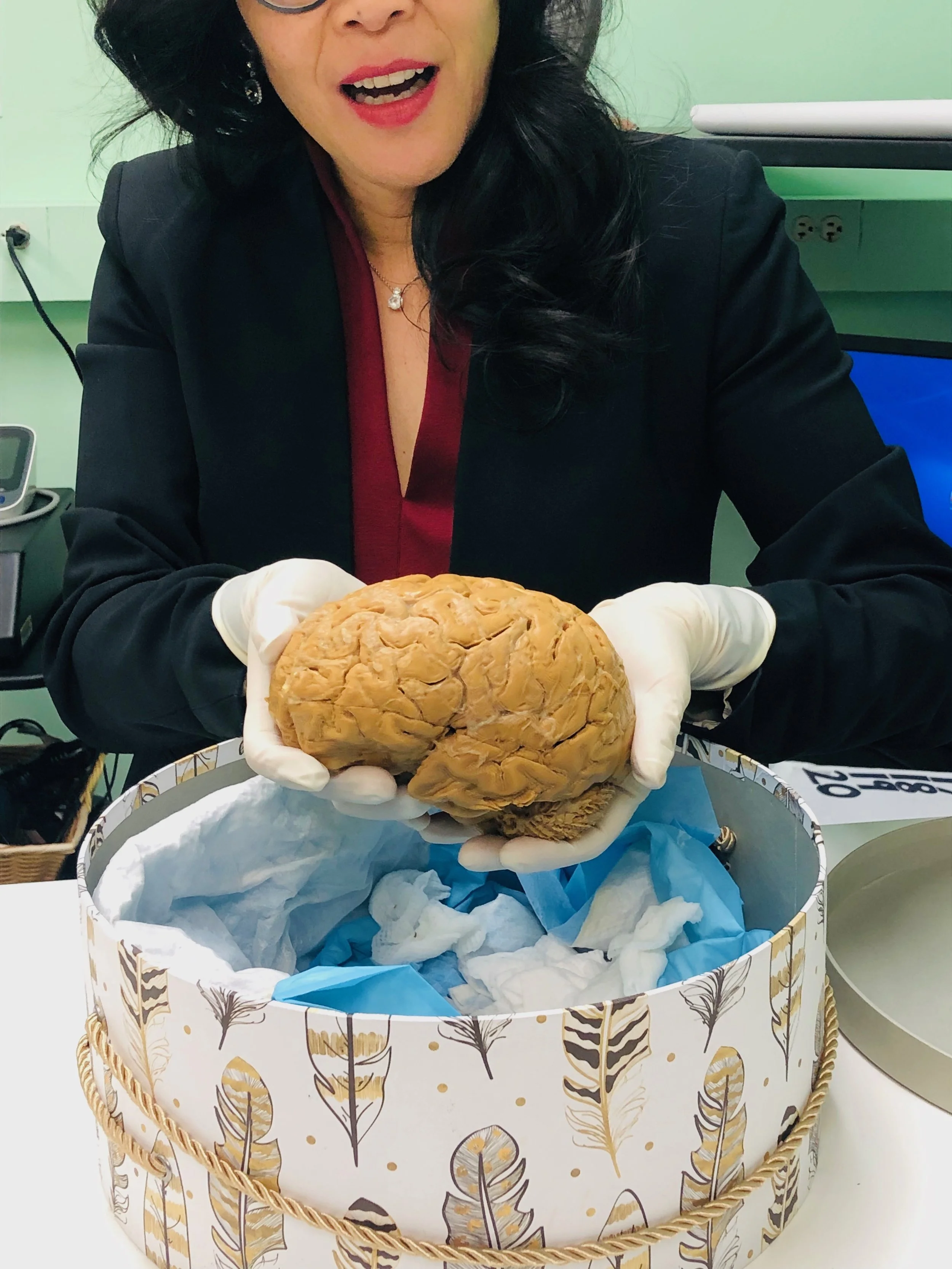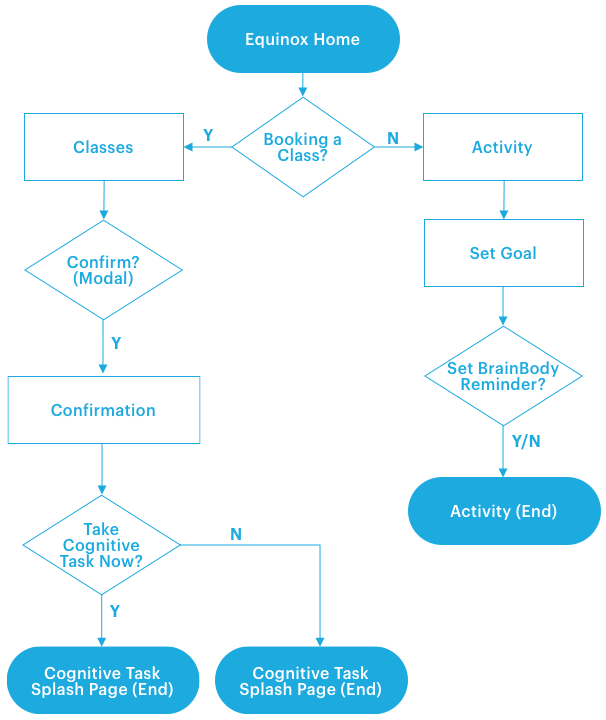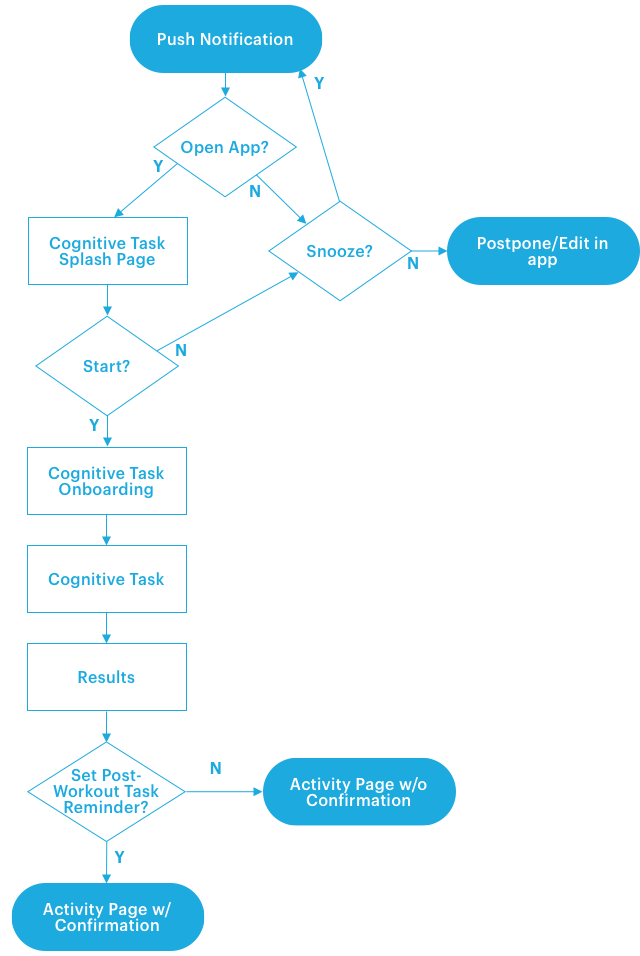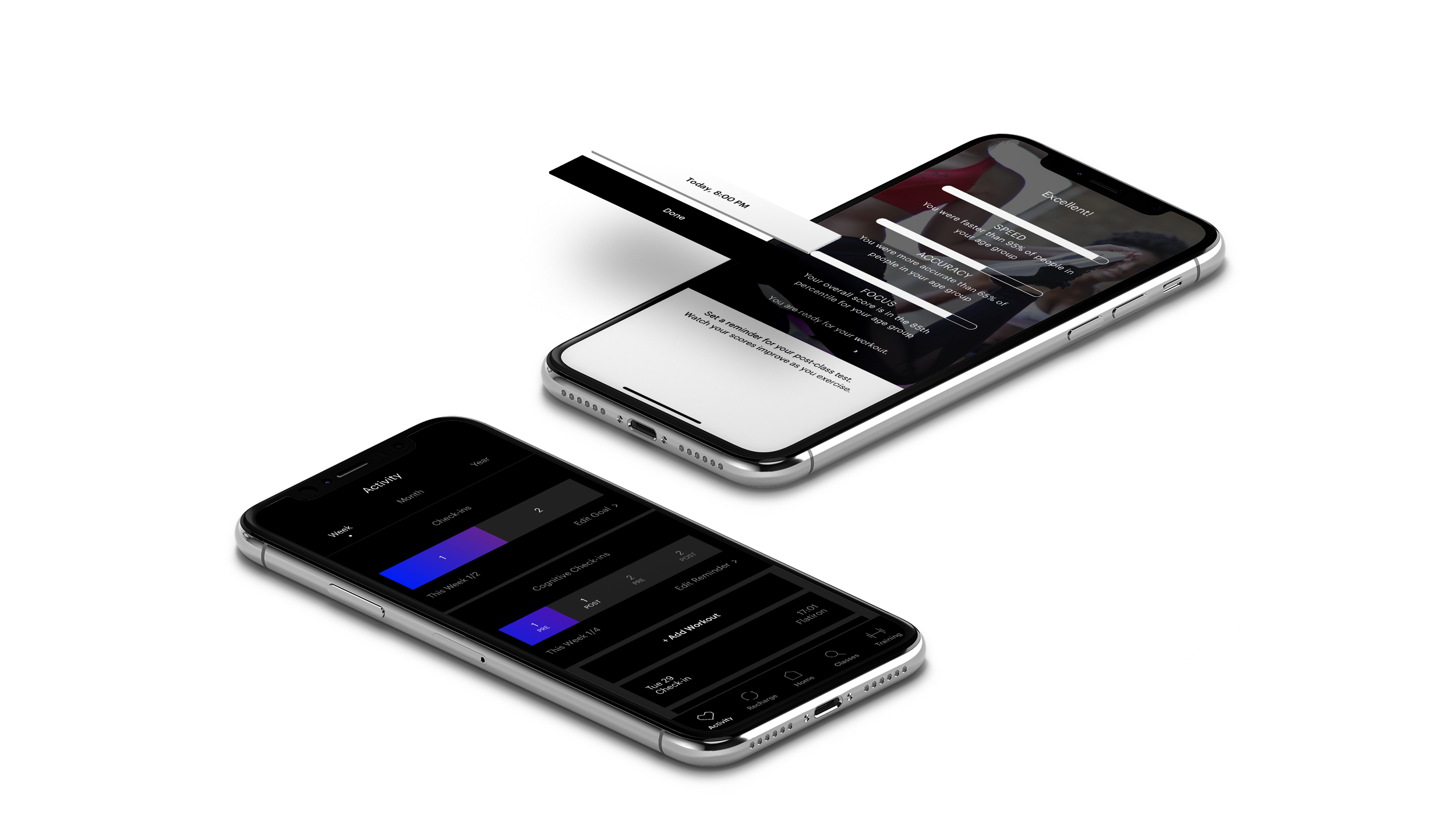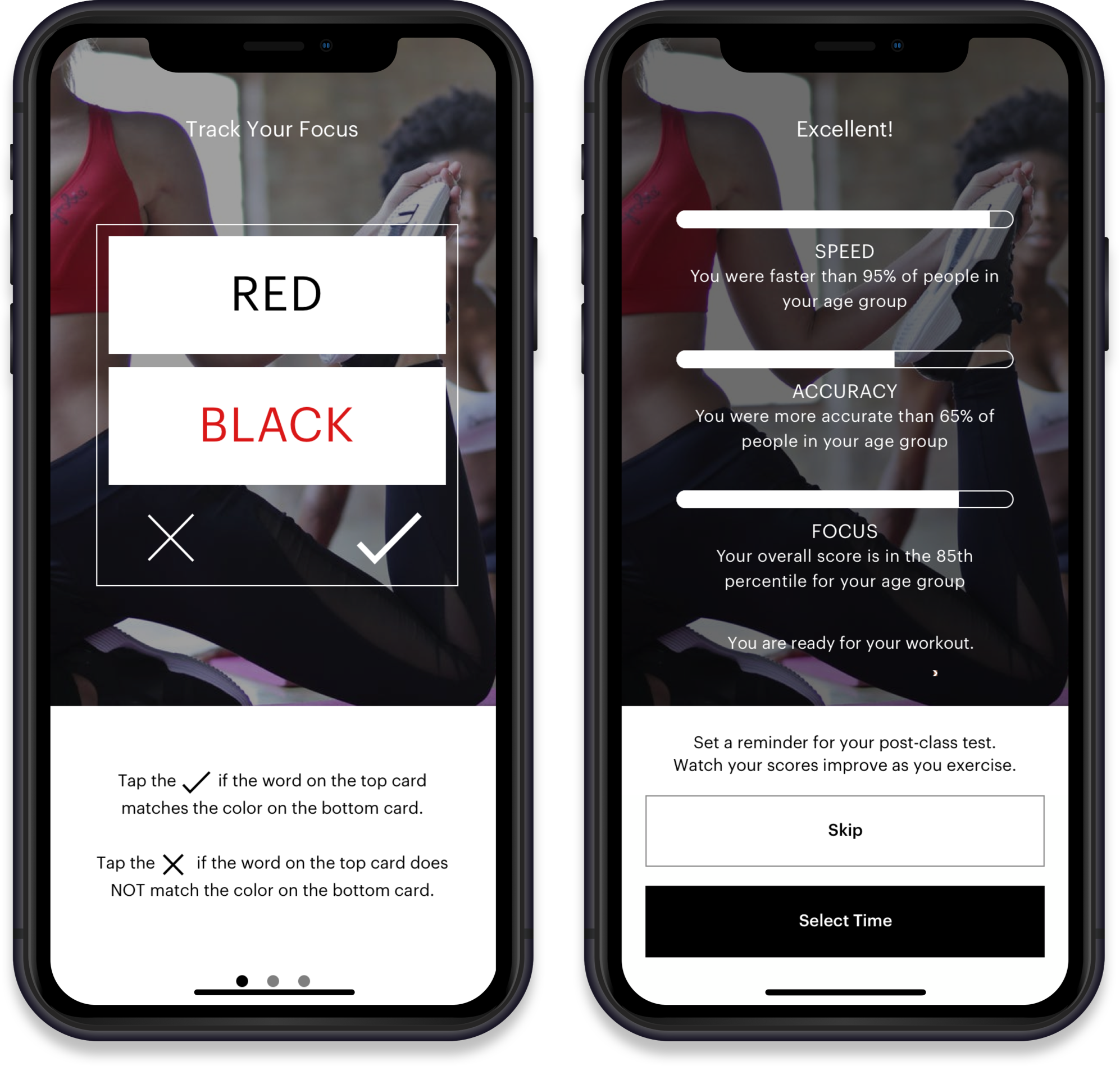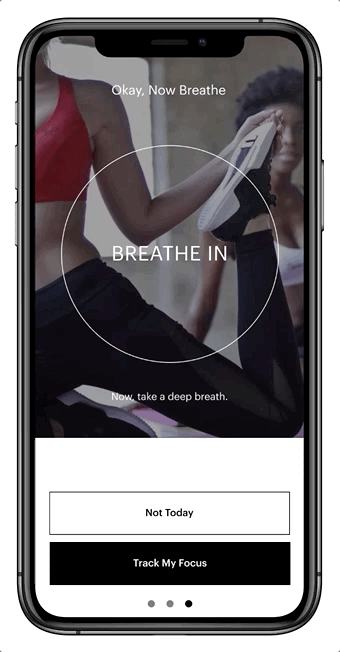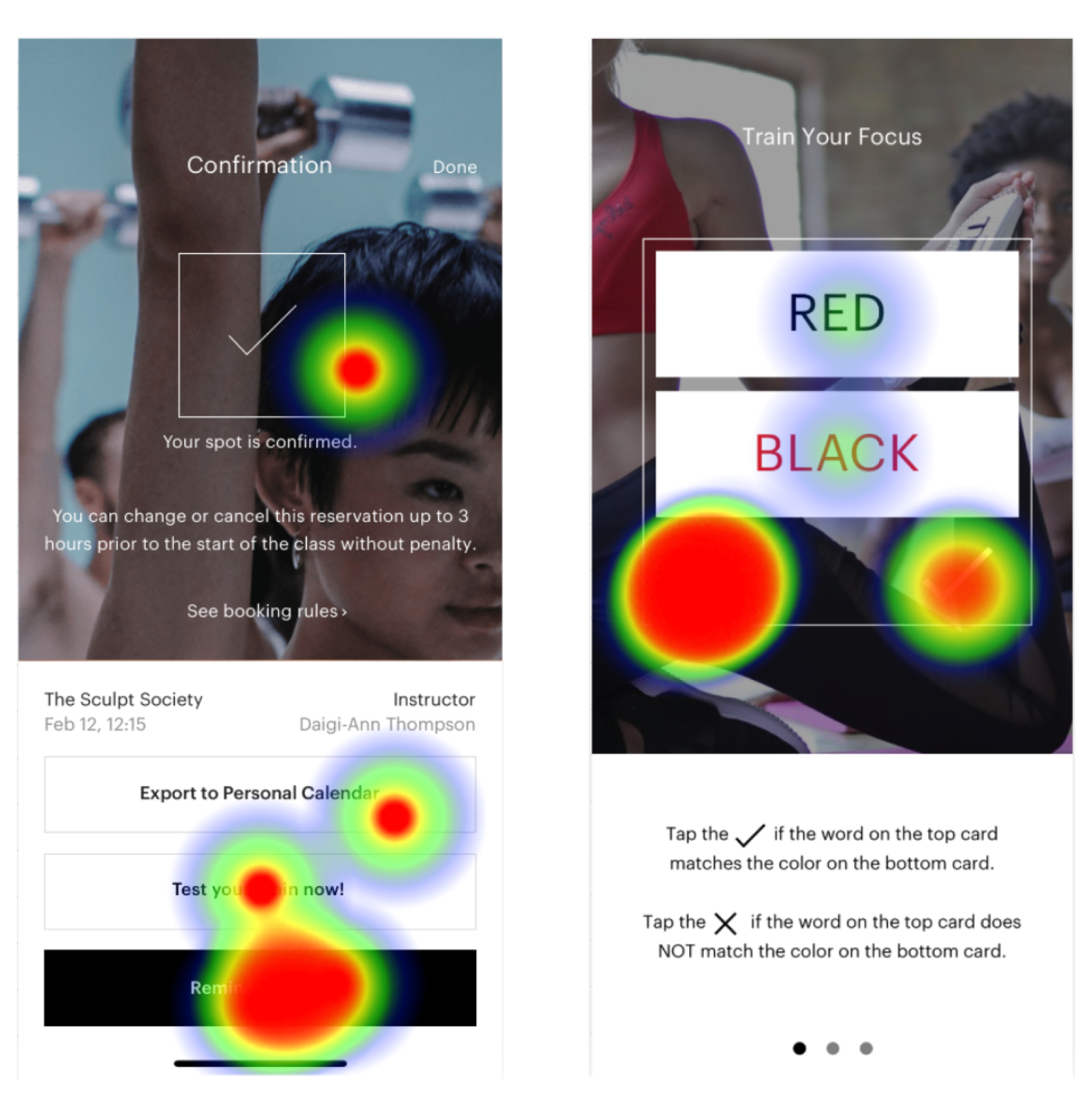Brief
As UX consultants at BrainBody, my team designed an initial prototype that inspires people to engage in more consistent physical activity through cognitive self-assessments.
Drawing inspiration from Nir Eyal’s Hooked model, we laid the groundwork for a scaleable B2B platform through modular content, variable rewards, and streamlined user flows based on end-users’ existing behaviors.
“I want exercise to complement my life, not complicate it.”
Client
Dr. Wendy Suzuki, BrainBody
Responsibilities
Client Communication, Comparative Research, User Research, Personas, User Journeys, Design Studio Facilitation, Strategy, User Flows, Ideation, Wireframing (Low to High Fidelity), Prototyping, Motion Design, UI Specifications
Tools
Google Suite, Sketch, Adobe Photoshop, Adobe Illustrator, InVision, InVision Studio, Zeplin
Our Client
Dr. Wendy Suzuki is a neuroscientist at New York University who has spent the last ~20 years researching the short and long-term effects of regular exercise on cognitive activity. Her lecture, entitled “The brain changing benefits of exercise,” was one of the most viewed TED Talks of 2018.
What is BrainBody?
BrainBody is an early stage machine learning platform that builds upon Dr. Suzuki’s research by tracking improvements in cognition due to physical activity. Fitness companies can leverage this “brain data” not only as a differentiating factor from competitors but also as a way to provide smarter exercise recommendations to their clientele.
As a B2B startup, BrainBody’s initial target market is the digital health & wellness industry, which is currently valued at $28B and projected exceed a $100B valuation by 2023. Among its first set of prospective partners are Daily Burn, Equinox, and celebrity Julianne Hough.
Dr. Wendy Suzuki explains the impact of physical activity on the brain during our team’s trip to her lab at NYU.
We believe…
…allowing fitness enthusiasts to track changes in their cognitive performance pre- and post-exercise will inform them of the short- and long-term benefits of physical activity on the brain.
This will motivate them to exercise more habitually, thus making a long-term investment in their physical and cognitive health.
Our Closest Competitor: Physical Activity Tracking Apps
Our Closest Competitor: Cognitive Training Apps
Understanding Our Users
Although BrainBody is a B2B startup targeting fitness organizations, we had to speak with end-users in order to determine the direction of our MVP design.
We interviewed 20 potential end-users by phone and in person. All our interview participants participate in some form of exercise at least once a week. Interviews took place over the course of four days.
Each session ranged from 15–70 minutes. We asked questions related to participants’ goals, motivations, behaviors, and pain points related to exercise.
Research Insights
People said they work well when they have someone to motivate them
Exercise classes give users a sense of community
People find it hard to work out when they feel overwhelmed
People use calendars to track their workouts and navigate the day
People mentally prepare themselves prior to a workout
Arrival time is 5-15 minutes early, or right on time for exercise class
User Research Report
“I find it hard to exercise when I feel mentally overwhelmed.”
The Problem
Without regular exercise, people are more vulnerable to the degenerative effects of aging on the brain.
How might we empower users to invest in developing smarter exercise habits?
Our Constraints
Time: With only 2.5 weeks to conduct user research, design the MVP, and test our initial prototype, our team had to pursue quality over quantity.
Team: Our UX team must advocate for the user while keeping aligned with stakeholder goals.
Technology: People won’t be wearing EEG monitors to the gym any time soon!
Primary Persona
Kathy Zeller, 31
“When I go to the gym I feel happy, accomplished, and ready to get things done!”
Kathy is a successful business consultant who enjoys going to the gym as often as possible. Her busy schedule causes a lot of stress, so she does what she can to mitigate the pressure in her life with exercise, meditation, and keeping track of her activities. She likes to take classes that keep her motivated, give her a sense of community, and keep her engaged.
Secondary Persona
Chris Nelson, 36
“I have to mentally prepare myself before I can even attempt to go to the gym.”
Chris works at an agency in the Flatiron District. He’s been an Equinox member for a few years, but a few bad instructors have turned him off from exercise classes. His workout frequency has gone down, but he still goes to the gym twice a week. He wants to do better but finds it difficult to find the proper motivation. He’s questioning whether the steep monthly fees are worth it.
Reshaping the Scope
What does the MVP really look like?
During our initial stakeholder interview, our clients expected us to design two products: a B2B analytics reporting tool, and the consumer-facing BrainBody app integration.
Due to significant time constraints and limited resources, we negotiated with our client to adjust the scope of the project.
We asked the question: What was the most essential aspect of the user’s journey that will determine the success of this product?
Our biggest problem wasn’t cognitive tracking. It was habit formation.
How do we get a motivated, routine-oriented, but already busy Equinox member to engage in cognitive tasks before and after working out?
Based on our interviews, we learned that end-users often leave their workout with a sense of accomplishment, but arrive at the gym feeling unmotivated and frazzled.
So we focused on the pre-workout cognitive task.
Feature Prioritization
As we strategized our solution, our team prioritized the essential components of gamification: goal, rule, feedback, reward, and motivation.
Equinox App Map
BrainBody Touchpoint Opportunities
User Flows
Scheduling Pre-Workout Task
1a (Booking a Class)
1b (Setting an Activity Goal)
Tracking Cognitive Activity
User Flow 2
Early Sketches
How might we get end-users to assess their cognition during the day?
01 Ideation: using the Crazy 8 method and dot voting
02 Convergence: taking inspiration from team sketches into a unified flow
How might we show progress to Equinox members?
01 Immediate Feedback: show members how they did in the short-term
02 Long-Term Motivation: elicit investment through long-term graphs
KEY FEATURES
01. Activity Goals
Members can schedule reminders to set baseline cognitive metrics
02. Cognitive Task Instructions & Results
Members can test and track their brain activity using BrainBody’s modular cognitive tracking content.
03. A Deep Breath
Mindfulness and relaxation is encouraged. (Animated on InVision Studio)
04. Activity
Cognitive assessments integrate into the member’s Activity Dashboard. Positioned alongside gym check-ins and workout trackers, BrainBody functionality encourages Equinox members to track their brain activity like they track any other physical exercise.
05. Other Touchpoints
Members are invited to assess cognition after signing up for classes. In the future, BrainBody-powered mood and mental ratings can be leveraged to promote specific classes and further encourage community.
UI Specifications
Usability Testing
We conducted two rounds of moderated in-person usability testing, with four participants each, and iterated upon our designs between rounds. We used the Maze app to track participants’ interactions with our high-fidelity prototype.
Participants had to perform three tasks: book an Equinox class (user flow 1a) set an activity goal (1b), and perform the pre-workout cognitive task (2).
REsulting Changes
Rephrased Tasks to mitigate confusion over terminology, e.g. “work out independently,” “open the app,” “body sculpt” vs “sculpt society”
Removed cognitive task CTA from Class Confirmation page and replaced w/ a pop-up or modal
Revised microcopy to reiterate BB’s functionality as cognitive assessment, rather than training
Revised button hierarchy to maintain consistency
“This looks like something that would belong on the [Equinox] app.”
What’s next?
Following positive feedback on this scalable B2B solution, our team is anticipating the results of Dr. Suzuki’s conversations with potential partners.
Team Credits
All team members contributed to Research, Synthesis, Ideation, Wireframes, Prototype, Usability Testing, and Presentation.


